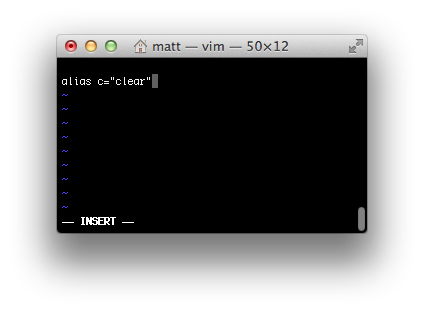
- #OS X OPEN TERMINAL HERE HOW TO#
- #OS X OPEN TERMINAL HERE FOR MAC#
- #OS X OPEN TERMINAL HERE FULL#
- #OS X OPEN TERMINAL HERE MAC#
This command will list the current directory contents. It means it doesn’t matter if you type pwd or PWD the result will be the same. By the way, all commands are case-insensitive.
#OS X OPEN TERMINAL HERE FULL#
If you type it, the command will print the full path of the current folder, so you will never get lost. The first command is PWD, which stands for Print Working Directory. There are many commands, but all you need is only three. Since you are planning to use the command line, you need to know some basic commands. “, like this: Open Finder from Terminal Basic navigation commands in Terminal So, to open the current directory in the Finder type “ open. There is a shortcut for the current directory in macOS – a dot symbol. Use open command followed by the directory name.
#OS X OPEN TERMINAL HERE HOW TO#
How to open Finder from Terminalīut how about the opposite? What if I’ve been switching directories in the Terminal and now I want to reveal my current directory in the Finder app? Now, you can use Control+Option+Command+T key combination (or Finder->Services menu) to open the Terminal. Right-click on the sidebar item, e.g., Downloads or Desktop, and in the context menu select “Show in Enclosing Folder.” Using this feature will reveal the folder in the right pane of the Finder. So, if you want to open Terminal app in Desktop folder from the Finder’s sidebar, it will not work.īut I happened to know a workaround for this issue. Here’s the second reason why the New Terminal option is not available in Services (and the key combination isn’t working) – Finder does not allow Services on items in the Sidebar (left pane). This is how you will open a Terminal app in the selected directory in 4 keystrokes! Now, select any folder in the Finder and use newly created Control+Option+Command+T key combination.

Then with the right hand, tap on T key and release all keys. With your left hand press Control, Option (Alt) and Command buttons and hold. By default, the shortcut is none.Ĭlick on “New Terminal at Folder” option and the label will change to Add Shortcut. How to set a shortcut to open Terminal on MacĪfter enabling both “New Terminal at Folder” and “New Terminal tab at Folder” options in the Service Preferences add command shortcuts. Scroll and find both options under Files and Folders section in the right pane. Make sure the Shortcuts tab is selected at the top of the pop-up window and click on Services item in the left pane. To enable both “New Terminal at Folder” and “New Terminal tab at Folder” go to Finder menu, scroll to Services, and then scroll all the way to the bottom and tap on “Services Preferences.”
#OS X OPEN TERMINAL HERE MAC#

This will paste the full path of the folder in the Terminal app. Then drag the folder to the Terminal window. The first approach is to open a Terminal, type cd, and hit Space. And I want to open the Terminal in TestFolder1 directory.
#OS X OPEN TERMINAL HERE FOR MAC#
Windows Explorer for Mac – Easy Guide For PC Switchersįor instance, I created three folders in my Desktop: TestFolder1, TestFolder2, and ScreenShots. If you not familiar with the Finder or need a refresher read my post about it: Finder is the built-in app which allows users to browse disks and folders on Mac. Let’s assume you were working with the Finder. How to open Terminal in the current directory? But now, let’s answer the question that many people ask. Well, first, if you hit Command and Space bar, and then type just “t” it is possible that autocomplete function in Spotlight will display Terminal and all you need to hit Enter to start the app. I know that a smart reader like you would count the keystrokes and say: “Hey, Al, I have to hit the keyboard 11 times. This will open Terminal in the current user directory.

In the Spotlight Search bar type “terminal” and hit Enter. To open Termical on Mac: Press Command (⌘) key and hit the Space bar. Full Disclosure Here… Shortcut to open Terminal on Mac is: If you buy through affiliate links, we may earn a commission at no extra cost to you.


 0 kommentar(er)
0 kommentar(er)
